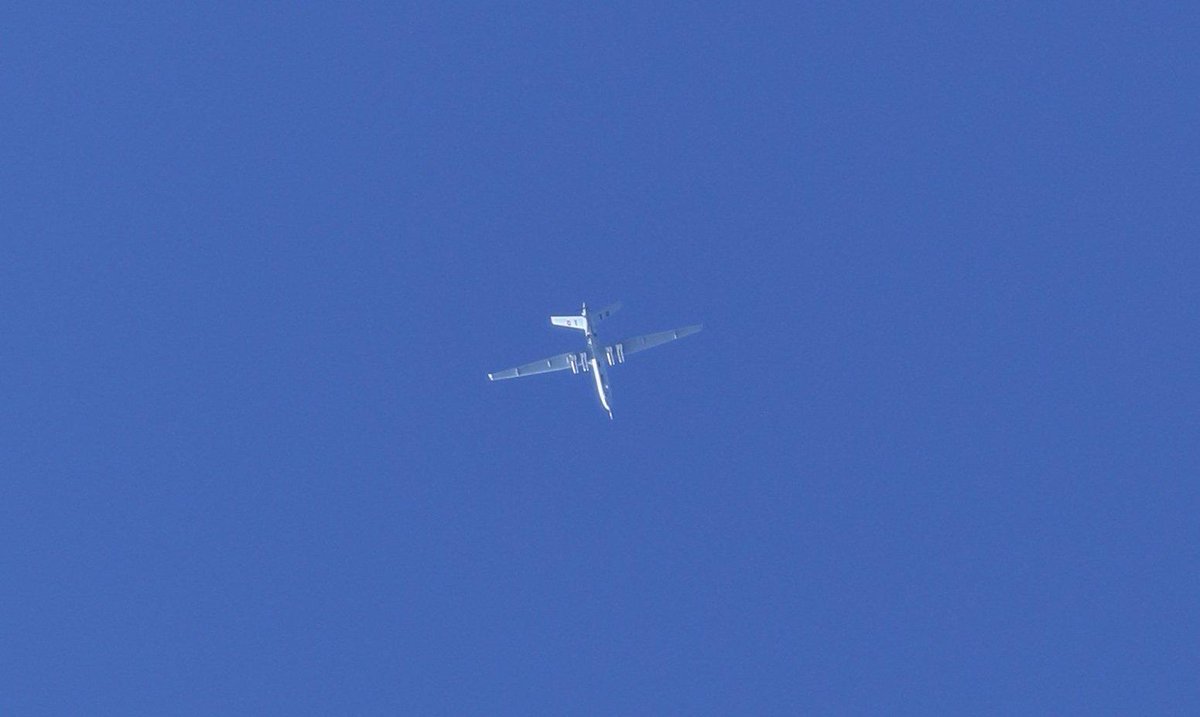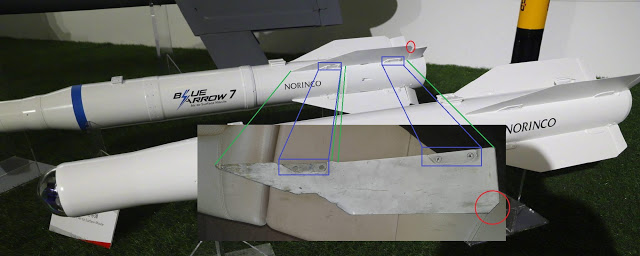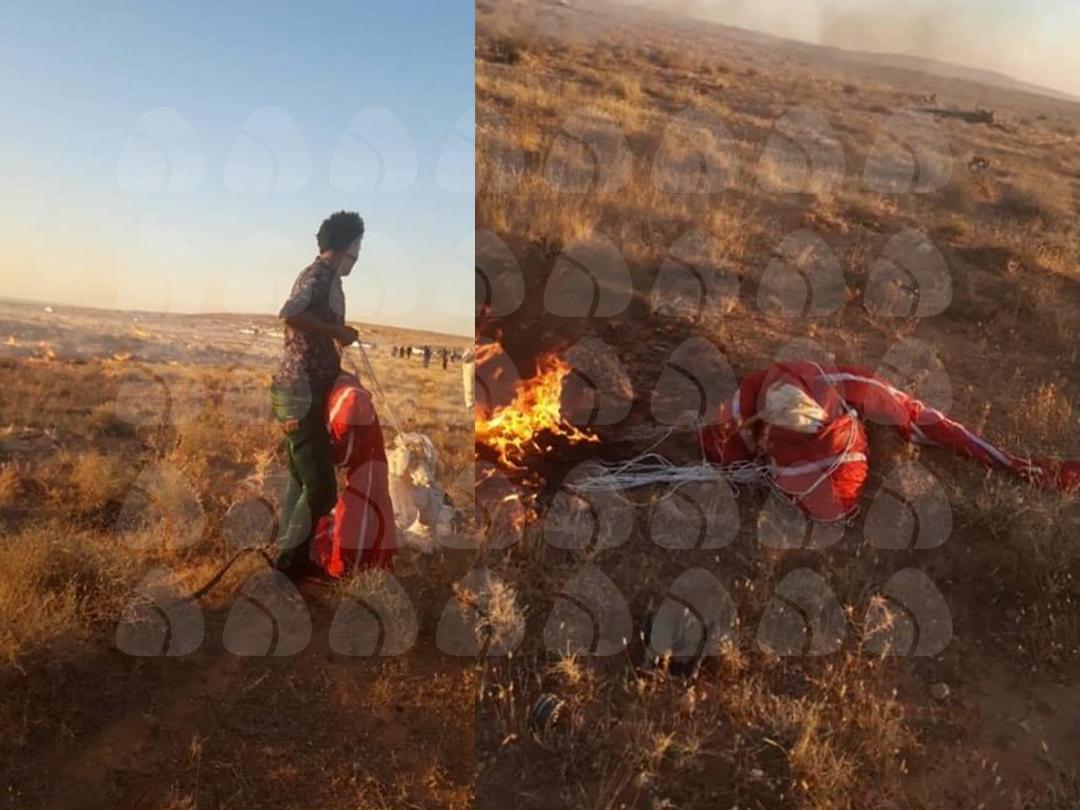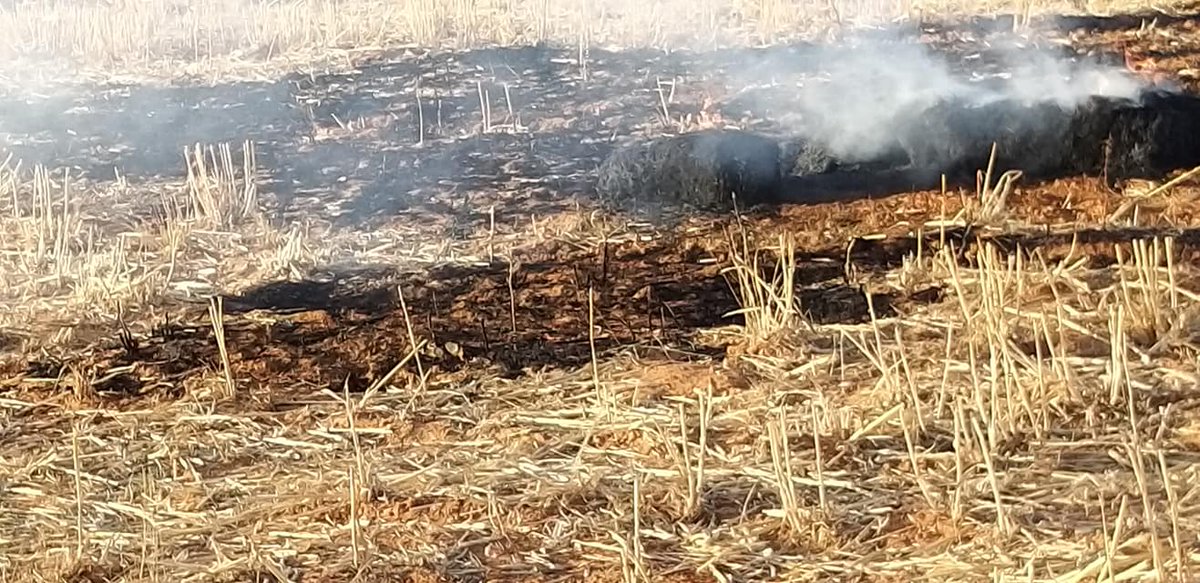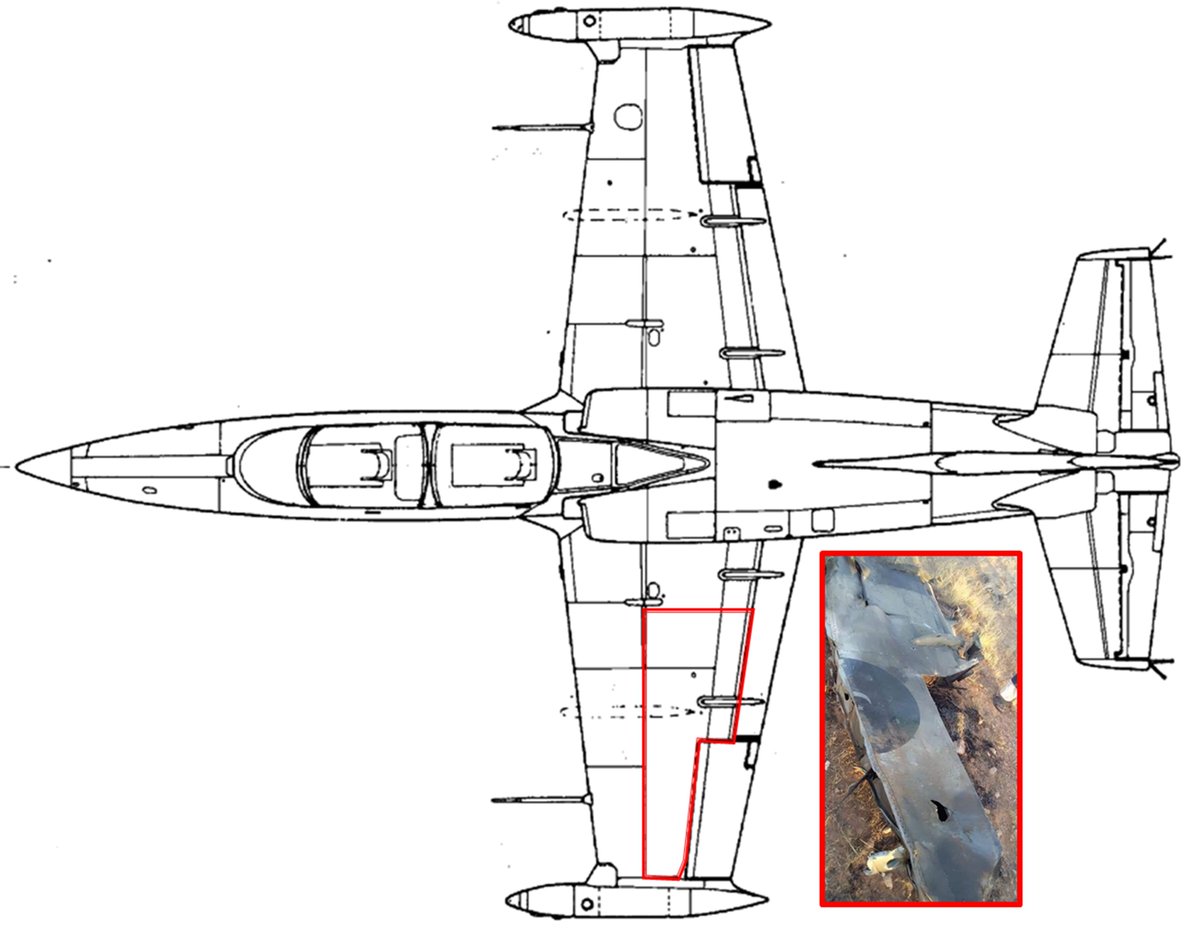It looks like you're using an Ad Blocker.
Please white-list or disable AboveTopSecret.com in your ad-blocking tool.
Thank you.
Some features of ATS will be disabled while you continue to use an ad-blocker.
Diplomats and Executives Evacuate Libya as Former Government Takes Tripoli Back With Military
page: 3share:
a reply to: worldstarcountry
On it. Back to you after I make some calls.
TonyS, if we are talking France, your my guy in the know. If you see this, please update us on French activity or interests.
On it. Back to you after I make some calls.
More scenes from the city, wrecked equipment, locals finish attending a prayer and one is interviewed. Then it ends with somebody investigating a
former LNA operations room.
a reply to: worldstarcountry
O.K., not finding much of recent news and my Libyan contact can not presently reach family in Tripoli due to spotty phone service and problems in Tunisia with ISIS raid on Thursday.
Your report of Chadian mercenaries is interesting. The French military has an established air base in Chad which is providing air support for counter insurgency operations against Boko Haram.
There is anecdotal evidence of France providing logistical support for the LNA:
www.alaraby.co.uk...
The clearest indication of French support:
en.m.wikipedia.org...
More as it develops.
O.K., not finding much of recent news and my Libyan contact can not presently reach family in Tripoli due to spotty phone service and problems in Tunisia with ISIS raid on Thursday.
Your report of Chadian mercenaries is interesting. The French military has an established air base in Chad which is providing air support for counter insurgency operations against Boko Haram.
There is anecdotal evidence of France providing logistical support for the LNA:
www.alaraby.co.uk...
The clearest indication of French support:
en.m.wikipedia.org...
From early 2015, during the years prior to the April 2019 attack on Tripoli, Haftar received long-term support from French authorities, including French "advisers, clandestine operatives, and special forces"[47] helping the LNA's military operations in the east and south of Libya.[48][49] Three of the French special-forces soldiers died in a helicopter accident near Benghazi in July 2016.[47] Bloomberg News stated that the al-Sarraj administration had long-term support from Italian authorities.
More as it develops.
a reply to: TonyS
I have only been able to confirm the presence of French operators in surrounding countries, but other than the incident outside Benghazi three years ago, I also cannot seem to find any indication of French support for the LNA other than the protests of Italy, and the GNA cancelling a deal with Total energy, which was clarified days later as a request for some updated paperwork or something. I think I may have posted that information on page one.
But, with you reminding me that France has a base in Chad, I think we could speculate that perhaps French intelligence recruited these mercenaries for the LNA? It is quite a reach, and I doubt we could ever confirm that. But its the only connection I can draw at this time with the available intel we have.
a reply to: Balans
That list looks about right! You should also include non-state actors as a third party. Somehow, ISIS keeps popping up at inconvenient times for the LNA further East. They do not necessarily attack the GNA, or support them. But situations can change.
I have only been able to confirm the presence of French operators in surrounding countries, but other than the incident outside Benghazi three years ago, I also cannot seem to find any indication of French support for the LNA other than the protests of Italy, and the GNA cancelling a deal with Total energy, which was clarified days later as a request for some updated paperwork or something. I think I may have posted that information on page one.
But, with you reminding me that France has a base in Chad, I think we could speculate that perhaps French intelligence recruited these mercenaries for the LNA? It is quite a reach, and I doubt we could ever confirm that. But its the only connection I can draw at this time with the available intel we have.
a reply to: Balans
That list looks about right! You should also include non-state actors as a third party. Somehow, ISIS keeps popping up at inconvenient times for the LNA further East. They do not necessarily attack the GNA, or support them. But situations can change.
edit on 6-29-2019 by worldstarcountry
because: (no reason given)
a reply to: worldstarcountry
Just a guess on my part, but I would suggest it is likely that the French have advisors on the ground in Benghazi.
I think it is likely that the French provided materiel and logistics support to the Chadian militia members; probably transport as well.
Know this; based upon my research, the French have something like 7,000 troops and personnel on bases in Senegal, Mali, Faso, Chad and Nigeria fighting Boko Haram; they are also assisting the Algerians to protect their oil fields and I would guess they have advisors and possibly security personnel in Tunisia.
From what I understand, the French are highly motivated and determined to blunt ISIS and Al Queda cells in Western and North Africa and will do whatever is necessary to effectuate that. However, they are, as well, masters of the lowest of low profiles and their intelligence in the area is second to none. Years of Colonization follwed by their maintenance of the "Francophone" area of Africa in the form of military and social programs have provided them with detailed understanding of available infrastructure resources at their disposal throughout the area. They also work with the Tuareg tribes to gather data and stage materiel and supplies where and when neeeded.
Just a guess on my part, but I would suggest it is likely that the French have advisors on the ground in Benghazi.
I think it is likely that the French provided materiel and logistics support to the Chadian militia members; probably transport as well.
Know this; based upon my research, the French have something like 7,000 troops and personnel on bases in Senegal, Mali, Faso, Chad and Nigeria fighting Boko Haram; they are also assisting the Algerians to protect their oil fields and I would guess they have advisors and possibly security personnel in Tunisia.
From what I understand, the French are highly motivated and determined to blunt ISIS and Al Queda cells in Western and North Africa and will do whatever is necessary to effectuate that. However, they are, as well, masters of the lowest of low profiles and their intelligence in the area is second to none. Years of Colonization follwed by their maintenance of the "Francophone" area of Africa in the form of military and social programs have provided them with detailed understanding of available infrastructure resources at their disposal throughout the area. They also work with the Tuareg tribes to gather data and stage materiel and supplies where and when neeeded.
originally posted by: worldstarcountry
a reply to: galadofwarthethird
Another view of reprisal strikes.
And, Norwegian troops are ha going out in Mali too. Interesting.
a reply to: worldstarcountry
www.zerohedge.com...
www.zerohedge.com...
The New York Times is outraged, just outraged! — that US anti-tank missiles have been found in "unknown" Libyan rebel hands. Of course, when tons of American military hardware was covertly sent to al-Qaeda linked "rebels" fighting to topple Muammar Gaddafi in 2011, and when those same weapons were later transferred to the anti-Assad insurgency in Syria, many of them no doubt used by ISIS and al-Nusra Front, the mainstream media didn't find much to complain about. But now the "scandal" is being uncovered in 2019?
Currently, it's the UN-backed government in Tripoli which finds itself on the receiving end of deadly accurate high-tech US-made weapons systems, according to the Times:
Even the narcos in Mexico and South America have atgm's now . I think the Times is only feigning anger because of the javelins specifically, since
nobody produces them by license and they are so obviously American. Since the nyt, wapost and wsj are themselves run by members of the Intel
community, they must express their feigned anger due to the fact is was their peers in the CIA that moved all of that around. But only the javelins
have such an obvious source though, which will generate some animosity from the domestic America haters pretending to be sjw's, as well as some
sincere outrage from weapons control crowd.
a reply to: 727Sky
Also, how come you do not update the idlib thread?? I can provide you with half a dozen sources covering that region if your looking for some. I always check in and see lots of activity, but I don't always have the time to update .
The livemap alone I don't use, I just look for the Twitter source on the event page and add them to a list I check daily.
You know Syria has been shelling actual Turkish military posts along the way. I seen some pretty brutal ambushes and failed counter attacks as well between HTS, TIP, and the Syrian forces lately.
Also, how come you do not update the idlib thread?? I can provide you with half a dozen sources covering that region if your looking for some. I always check in and see lots of activity, but I don't always have the time to update .
The livemap alone I don't use, I just look for the Twitter source on the event page and add them to a list I check daily.
You know Syria has been shelling actual Turkish military posts along the way. I seen some pretty brutal ambushes and failed counter attacks as well between HTS, TIP, and the Syrian forces lately.
edit on 6-30-2019 by worldstarcountry because: (no reason given)
a reply to: worldstarcountry
By all means anything you might add is appreciated by the few of us who are interested in international entanglements. All I have presently is youtu.be...
By all means anything you might add is appreciated by the few of us who are interested in international entanglements. All I have presently is youtu.be...
a reply to: 727Sky
Im going to post a list of twitter accounts on that thread from many of the sources I use to monitor the Syria conflict. Some of them cover MENA in general, and a handful have a few niche dedications such as guns and weapons ID, so plenty of images.
But check out this recent GoPro footage from a tank engaging targets south of Tripoli. It looks like at one point either the crewman thought maybe he was approaching an IED maybe, or was just trying to finish off a guy from close. He shoots down at the ground barely a few feet in front of him. Makes a helluva mess, but reminds me of so many times I did the same thing in a video game.
Im going to post a list of twitter accounts on that thread from many of the sources I use to monitor the Syria conflict. Some of them cover MENA in general, and a handful have a few niche dedications such as guns and weapons ID, so plenty of images.
But check out this recent GoPro footage from a tank engaging targets south of Tripoli. It looks like at one point either the crewman thought maybe he was approaching an IED maybe, or was just trying to finish off a guy from close. He shoots down at the ground barely a few feet in front of him. Makes a helluva mess, but reminds me of so many times I did the same thing in a video game.
Ahh, is this a Chinese drone over the skies? Nobody asks how that got there, everybody only seems interested in American equipment.
He speculated as much back in April when images of these missiles showed up. Looks like his suspicions were confirmed.
Arnaud Delalande
@Arn_Del
Jul 1
#Libya #Tripoli - Photo of a Wing Loong UAV taken over the Libyan capital on June 30th confirms the engagement of this Chinese-made drone in support of #LNA troops.
He speculated as much back in April when images of these missiles showed up. Looks like his suspicions were confirmed.
Monday, April 29, 2019
Remains of Chinese made missiles found in Tripoli points to Wing Loongs airstrikes
As part of Operation Taoufane al-Karama, the accuracy of night air strikes has become unusually high for at least a week. The past days, many pictures of remains of missiles were sent to me for identification pointing they could have been launched by foreign air forces during night airstrikes around Tripoli. The photos have been taken in fighting in Wadi Rabe on April 17th and in Aziziya and comparison with Chinese made Anti-Tank Guided Missile (ATGM) LJ-7, also known as 'Blue Arrow-7', confirmed that this type of missiles was used in the two air strikes. Some Blue Arrow 7 missiles fragments were found following night air strikes on :
- Wadi Rabe' south of Tripoli on April 17th
- Al-Hira on April 20th
- El-Azizia on April 20th
- Ain Zara on April 21th
The LJ-7 missile is an ATGM derivative of a semi-active laser guided HJ-10 for export market. The missile has been displayed at Eurosatory 2012 as the Blue Arrow 7. It is also used for armor penetration is up to 1400 mm; it is achieved by increasing the warhead and reducing the fuel, resulting in the reduction of the maximum range.
Al-Khadim is a former airport located in al-Marj province in eastern Libya. Since June 2016, Emirates IOMAX AT-802 “Air Tractor” turboprop aircraft and Chinese-made Wing Loong UAV have been deployed on this airbase on which extension works started to increase its capacity. The existing parking area was equipped with a dozen of shelters, half of them used to house aircraft and drones.
PC died on me and lost a more detailed write up. I'll just copypasta the twitter posts for now on the downed L-39, im off to a park! More updates
later today, Turkey is sending reinforcements, including possibly terrorists from the Syria front. The GNA President also seeking support form
Indonesia.
Oded Berkowitz @Oded121351
#Libya- photos from wreckage of #GNA MiG-23 that was reportedly shot down by #LNA ground fire over #Tarhunah earlier today
Joseph Dempsey @JosephHDempsey Jul 5 Analysis of claimed wreckage of #Libya #GNA aircraft lost indicates Aero L-39 - not Mig-23 as initially reported.
A practical modification of a South African origin. UAE delivers, the LNA
upgrades it. Maybe that funny hummer from page one was from the LNA as well?
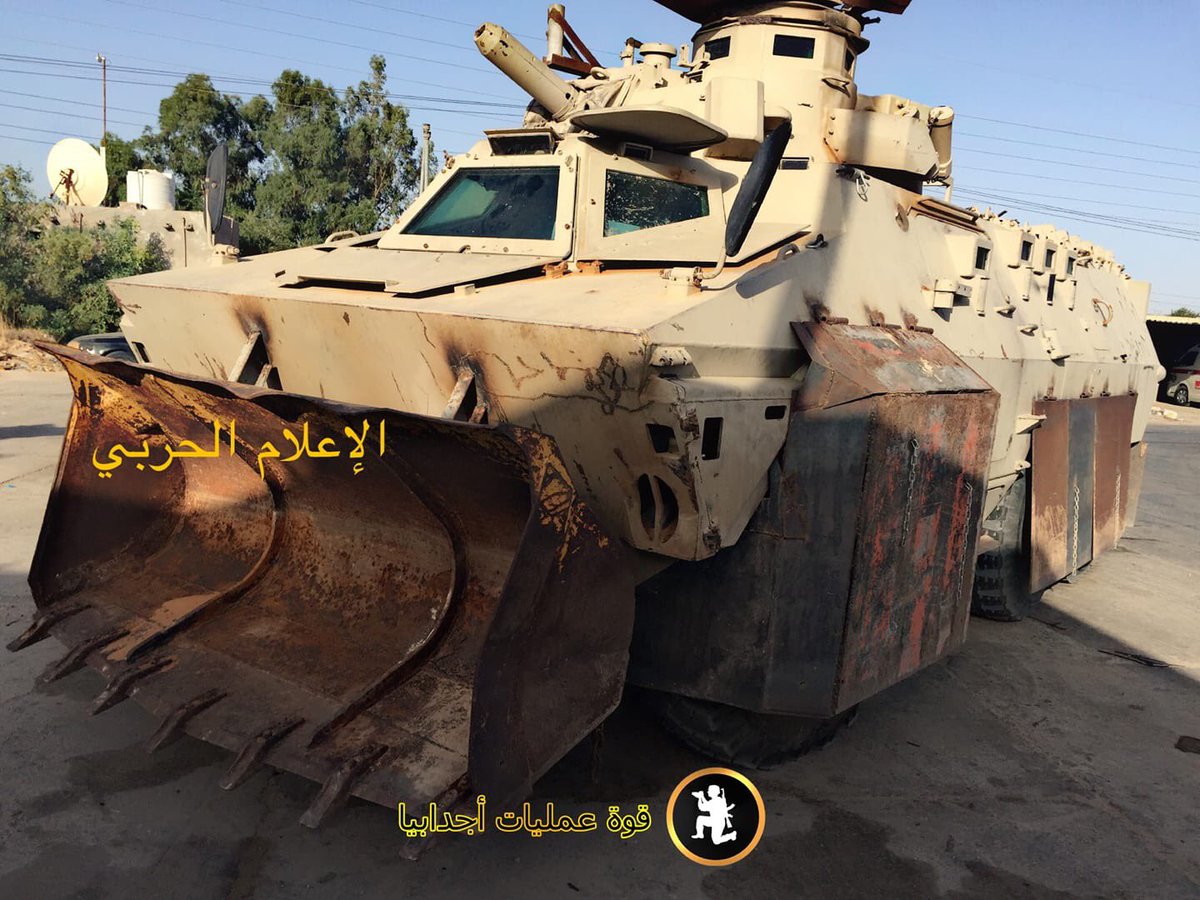
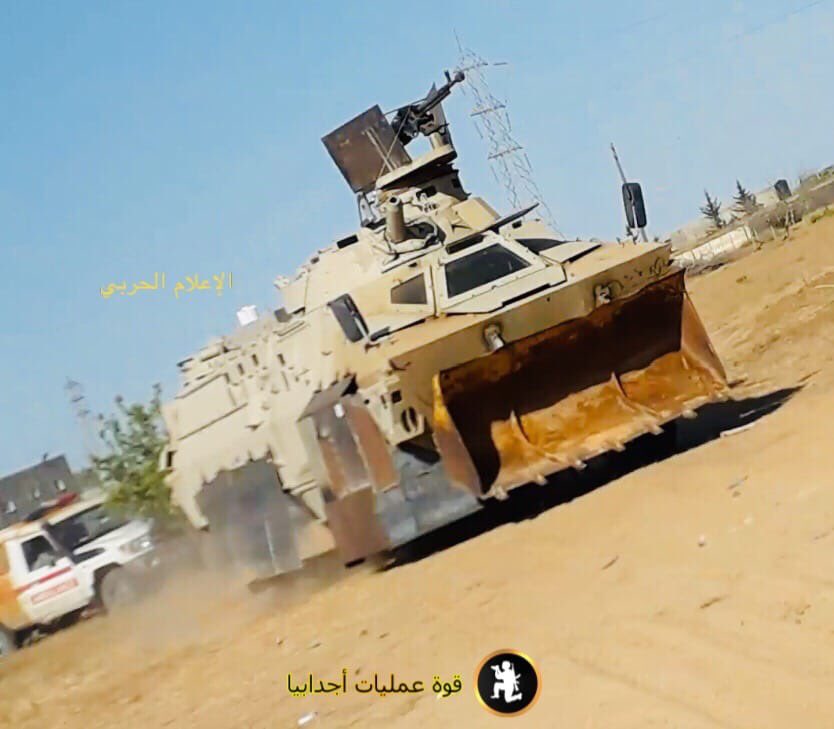


a reply to: TonyS
oh your going to love this, now the New York Times has stated that those Javelins belonged to the French! The analyst I follow broke it down in the following summary, with French state department I think it was claiming they were non-functional and awaiting destruction. That sure is rich isn't it?
What are they saying in French language media about this incident?
oh your going to love this, now the New York Times has stated that those Javelins belonged to the French! The analyst I follow broke it down in the following summary, with French state department I think it was claiming they were non-functional and awaiting destruction. That sure is rich isn't it?
#Libya- so apparently the FGM-148 Javelins that were found at #Garyan belonged to....#France
Wait, it gets more complicated. The weapons were meant to "protect French troops in Libya", but also "damaged and no longer usable" and "awaiting destruction". Well, which one is it? 2/
If it's non-usable & awaiting destruction, what the hell were the Javelins doing in Garyan, which had little to no significance prior to Tripoli campaign (and therefore had no reason to house French troops)?
If it was in fact meant to protect French troops and never transferred, that would indicate that there were French troops in #Garyan, the #LNA's theater command center for #Tripoli campaign. i.e #France supporting #LNA against #GNA in #Tripoli?
#France had supported the #LNA in #Libya even after the formation of the #GNA (mostly in #Benghazi), and it's no secret that they lean towards Haftar, but a direct support to the LNA in the #Tripoli campaign would be a big deal.... 5/
Also, violating the embargo or not, they clearly ended up in local hands....
Assuming all of this is true and that I'm not missing anything, there really is no good scenario for #France here... Either they supplied the Javelins to the #LNA (less likely), provided the #LNA direct military support against the #GNA in #Tripoli (more likely), or...both? 7/
Well, just to put another twist to it (as if there weren't enough), apparently the French embassy in Libya categorically denied the presence of French troops in Garyan (H/T @ZahiLibi) twitter.com... … 8/
What are they saying in French language media about this incident?
The current migrant situation in Tripoli which are getting ready to invade Europe, has been carefully orchestrated by the Italian armed forces and
intelligence presence in Tripoli since April-May 2019, when they intervened to attempt to stop Haftar from stopping the migrant flow !
This plan has been carefully put in motion by the Italian Supreme Council of Defense.
This plan has been carefully put in motion by the Italian Supreme Council of Defense.
Well I had to find some internet to make this update. The Turkish army has been heavily investing in ground based tactical lasers for their light
armor to use against low flying craft such as UAV's, or even in a C-RAM capacity. I did not notice this until I read some analysts findings recently,
but Turkey allegedly successfully demonstrated the first combat use of a ground based tactical laser, against a real combat target, in a real battle
zone.
I say allegedly because, well the Turks have become masterful in the use of propaganda, especially within the social media sphere, so there is a realm of possibility that this could be psy-ops. In any case, I present the following report which claims to corroborate this action.

(click image for source
Well well, the age of laser warfare has begun.
I say allegedly because, well the Turks have become masterful in the use of propaganda, especially within the social media sphere, so there is a realm of possibility that this could be psy-ops. In any case, I present the following report which claims to corroborate this action.

(click image for source
Really important news often goes unnoticed. They occur, no one notices them, but the events mentioned in this news often have consequences that later, having developed to a large scale, make observers gasp - and it’s good, if only out of surprise.
On August 4, 2019, one of these events occurred, mentioned in such news, but not noticed by anyone. For the first time, a combat vehicle armed with a combat laser destroyed another combat vehicle on the battlefield. In a real war, on a real battlefield. And no one noticed.
Turkey, concerned about achieving military superiority in the region, as well as gaining qualitative advantages in military power over Greece and Russia (and, apparently, also over Israel), has long and seriously invested in innovative weapon systems, including weapons on new technical principles. In the early 2010s, the Turkish company Savtag demonstrated experimental samples of plants of different capacities, starting from 1.25 kW, and then up to 50 kW. The systems were created in conjunction with Tubitak, a state research institute. The Turks showed these systems as technology demonstrators and did not particularly hide the fact that they plan to use these developments as weapons.
For operators of the UAE-owned UAV Wing Loong II, a Chinese-made aircraft, this was an ordinary reconnaissance and combat mission. Their drone armed with an anti-tank missile barraged over the Misurata area, conducting reconnaissance in the interests of Haftar’s troops and looking for targets that could be destroyed by a direct attack. The war in Libya has long taken the form of a bizarre mixture of the actions of irregular formations and weapons, created on the basis of the most advanced technologies, and UAVs were one of the symbols of such a mixture. The departure, however, ended with the UAV being shot down. And soon the world flew around the photo.
The details immediately became known. The Turkish installation, which shot down the UAV, is mounted on the chassis of an off-road armored car. Like the earlier Aselsan model, it is equipped with a Turkish-made optoelectronic guidance system. The system allows you to accurately inspect the target for firing, to select a vulnerable point, and then hold the laser marker on this point until the target is completely destroyed. Also, as with the previously demonstrated laser gun, a continuous radiation mode is provided, without long interruptions to the "pumping" of the laser. The power of the gun is 50 kW. This is so far the most powerful combat laser in the Turkish ground combat vehicle.
An important point is not an experimental setup. This is a fully functional combat vehicle armed with a laser gun. And she had just been tested in battle, and not at all against the "commercial" drone with E-bay. Such a gun could well bring down an unarmored helicopter, and easily. And Turkey can build such weapons in large quantities without any problems - now. And this is a tactical weapon, it does not need any special transportation conditions, a laser-armed combat vehicle has the same level of mobility as any other armored car of the same type. Ordinary soldiers, including conscripts, may well use these weapons. And the cost of firing this gun in the literal sense of the word is equal to the price of diesel fuel spent during the shooting. Let's just say, an unarmored helicopter takes about twenty-five rubles, approximately.
Will this episode be the start of a "laser weapon race"? Let's make a prediction: no, it won't. The epoch-making news, as they say, did not thunder. Well, who are the Turks in the world of war industry, right? The Turks will continue to improve their weapons, and no one will pay attention to them. And so it will be until, in some other war, Turkish laser guns on armored personnel carriers and tanks massively burn optoelectronic sights to enemy vehicles, burn engines for unarmored vehicles, shoot down helicopters and UAVs, and disable aircraft on the ground with long-distance, mowing infantry without noise and external unmasking signs. And then it’s all startled ...
Well well, the age of laser warfare has begun.
Damnit the thing that I find lately which inhibits my intelligence gathering is these translations of towns names. Five different sources for maps and
activities have five different spellings for each small town. Sometimes it's four out of five. I don't even know if it's possible for either of them
to even be accurate in the gramatical context of the language when I try to narrow down search parameters in search of specific incidents. I have
found some of their chat boards, and bet I can get seriously exclusive content if I could just get accurate translations!!
It will never stop me from seeking OSINT! 💪
It will never stop me from seeking OSINT! 💪
new topics
-
DOJ Special Counsel Robert HUR Says JOE BIDEN Can Be ARRESTED After Jan 20th 2025.
Above Politics: 8 hours ago
top topics
-
More Proof of Lawfare
US Political Madness: 15 hours ago, 20 flags -
I thought Trump was the existential threat?
World War Three: 16 hours ago, 19 flags -
Joe Biden Dabs Away Tears at Farewell White House Dinner
Politicians & People: 17 hours ago, 9 flags -
DOJ Special Counsel Robert HUR Says JOE BIDEN Can Be ARRESTED After Jan 20th 2025.
Above Politics: 8 hours ago, 7 flags -
Interesting Video-UFO?
Aliens and UFOs: 17 hours ago, 6 flags
active topics
-
Results of the use of the Oreshnik missile system in Dnepropetrovsk
World War Three • 229 • : Oldcarpy2 -
The Acronym Game .. Pt.4
General Chit Chat • 987 • : JJproductions -
DOJ Special Counsel Robert HUR Says JOE BIDEN Can Be ARRESTED After Jan 20th 2025.
Above Politics • 10 • : angelchemuel -
Petition Calling for General Election at 564,016 and rising Fast
Political Issues • 89 • : angelchemuel -
-@TH3WH17ERABB17- -Q- ---TIME TO SHOW THE WORLD--- -Part- --44--
Dissecting Disinformation • 3379 • : brewtiger123 -
Mood Music Part VI
Music • 3715 • : Hellmutt -
Well, here we go red lines crossed Biden gives the go ahead to use long range missiles
World War Three • 366 • : Freeborn -
Interesting Video-UFO?
Aliens and UFOs • 13 • : Arbitrageur -
Anyone like the Scorpions?
Music • 15 • : Cre8chaos79 -
The JAN 6th 2021 U.S. Capitol Unrest Charges Against Former President TRUMP Were Dropped Today.
US Political Madness • 15 • : WeMustCare

